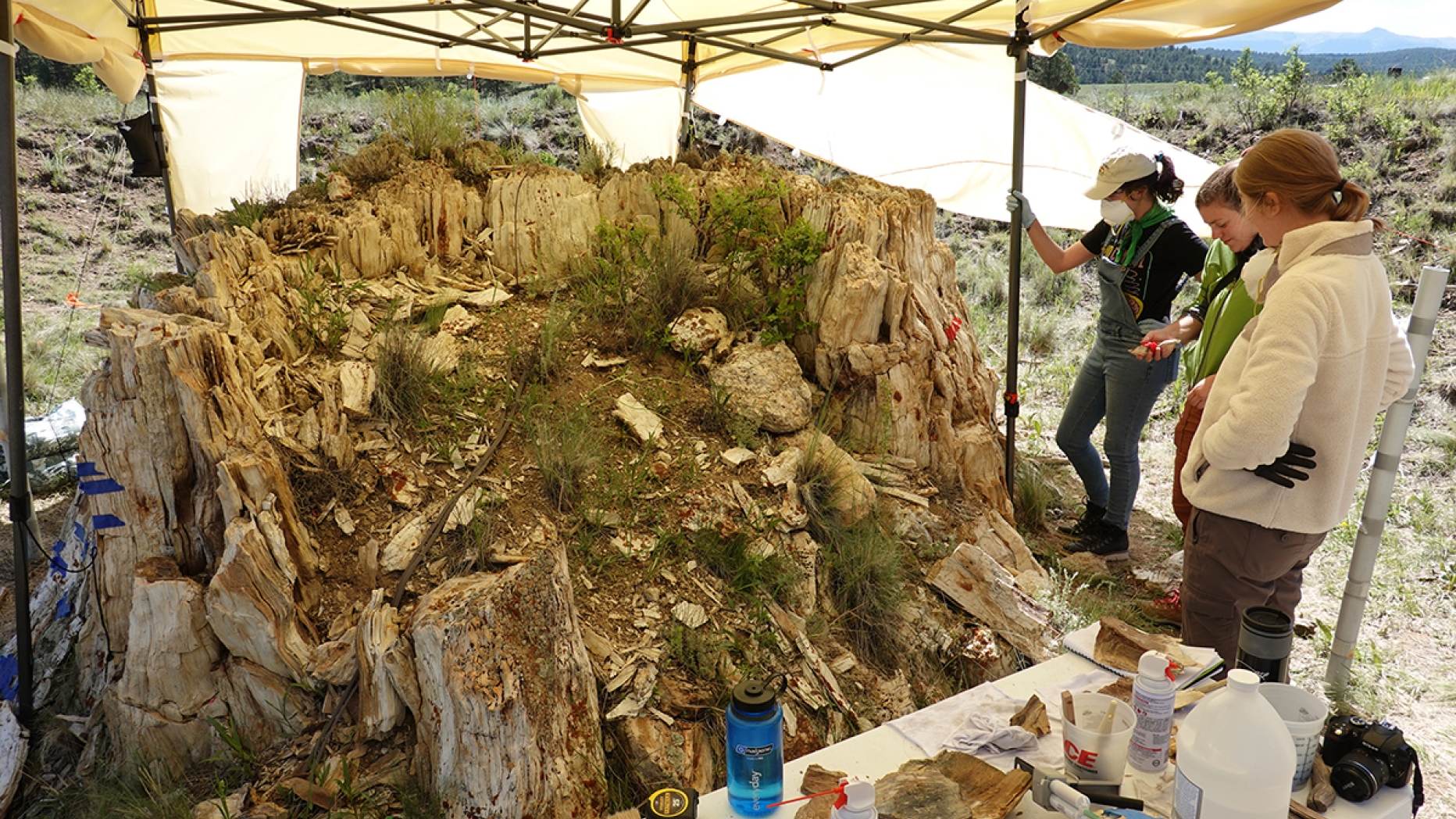Carly Adler | Florissant Fossil Beds National Monument

“I had the extraordinary opportunity to work on a 34-million-year-old fossil and explore its unique minerology.”
Stuart Weitzman School of Design
102 Meyerson Hall
210 South 34th Street
Philadelphia, PA 19104

“I had the extraordinary opportunity to work on a 34-million-year-old fossil and explore its unique minerology.”
During the month of June 2021, I worked as a research fellow at the Florissant Fossil Beds National Monument through the Center for Architectural Conservation. Caitlin Livesey, UCLA graduate student Isabel Schneider, and I worked under Frank Matero with close supervision from Dr. Herbert Meyer (Park Paleontologist), Conni O’Connor (Museum Technician), and Jeff Wolin (Lead Interpreter). Our project focused on Stump P-47; a 34-million-year-old petrified tree stump of the Sequoia Affinis species. My team’s primary goal was to test the feasibility of a large-scale stabilization treatment through survey, documentation and analysis of current material conditions, and implementation of the 2019 fragment reattachment protocol. My team utilized the division system developed in 2016 by UPenn Alumni Evan Oxland. Of the five created sections, I mainly addressed section P-1. Images taken by Oxland were annotated to identify incipient spalls, detachments, and losses of Stump P-47. Areas that were identified for reattachment were numbered and color-coded on the 2016 images, and color-coded stickers were numbered and placed on the fragment and its lacuna. For each piece that was loose or detached, I measured first, sometimes sketched, and then photographed. Dirt and vegetation were removed, and a light cleaning was performed with isopropyl alcohol before spot welds were marked with white chalk. Both the fragment and its corresponding area were scored using a Dremel to provide a better “grip” surface for the epoxy. The fragments and lacunas were then thoroughly cleaned with isopropyl alcohol, and the epoxy was applied to each scored area. Each fragment was given temporary supports and allowed to dry 24 hours. My team used epoxy Araldite 2015 which was successful when tested to resist damage caused by UV radiation, participation, and temperature fluctuations.
Stump P-47, specifically, experiences multiple stressors of deterioration daily. Extreme weather and temperature ranges, exposure to direct sunlight and precipitation, interaction between flora and fauna, and over a century of fragment loss due to theft and natural erosion have contributed to the stump’s poor condition. My team encountered several of these during our time there. The stump acts as an ecosystem which provides a unique habitat for various forms of plant and animal life. However, we were unwelcomed by insects, and much of the vegetation and animal life negatively affect the stump’s stabilization. Additionally, weather conditions posed several issues. The last two weeks were a mix of rain, hail, and unpredictable temperature fluctuations. Most days began with high heat and ended with thunderstorms or hail. Heavy rains created muddy conditions in the pit, making the unexcavated material vulnerable, and leaving Stump P47 entirely damp and impossible to work on. The park provided us with an alternative workspace in the yurt which we took advantage of whenever possible.
Overall, my time in Colorado was successful. My team reattached a total of 141 fragments, and possibly spearheaded a large-scale conservation treatment at the Florissant Fossil Beds National Monument. I had the extraordinary opportunity to work on a 34-million-year-old fossil and explore its unique minerology. The skills I learned in HSPV 600 and HSPV 601 came naturally when documenting each fragment, and the hands-on experience will prove irreplaceable in the professional field.